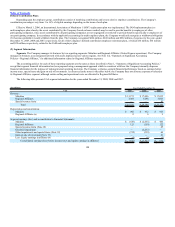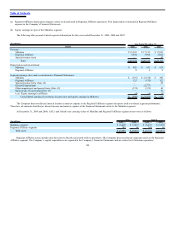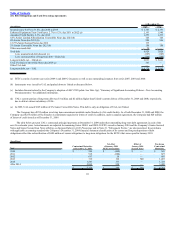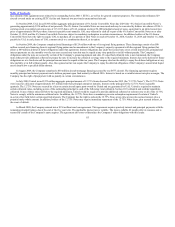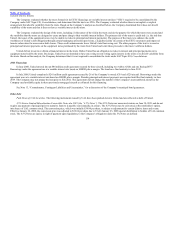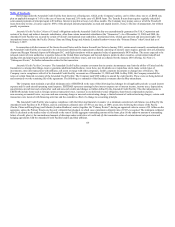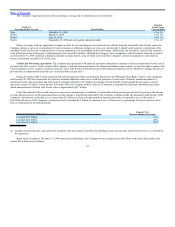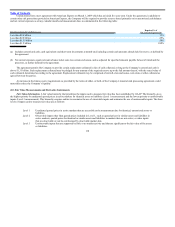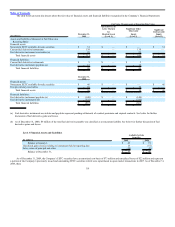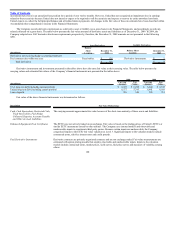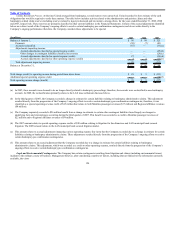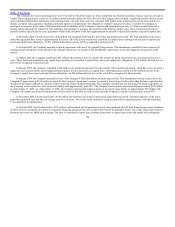United Airlines 2009 Annual Report Download - page 122
Download and view the complete annual report
Please find page 122 of the 2009 United Airlines annual report below. You can navigate through the pages in the report by either clicking on the pages listed below, or by using the keyword search tool below to find specific information within the annual report.
Table of Contents
United entered into a new agreement with American Express on March 1, 2009 which has an initial five year term. Under the agreement, in addition to
certain other risk protections provided to American Express, the Company will be required to provide reserves based primarily on its unrestricted cash balance
and net current exposure as of any calendar month-end measurement date, as summarized in the following table:
Total Unrestricted Cash Balance (a)
Required % of
Net Current Exposure(b)
Less than $2.4 billion 15%
Less than $2.0 billion 25%
Less than $1.35 billion 50%
Less than $1.2 billion 100%
(a) Includes unrestricted cash, cash equivalents and short-term investments at month-end, including certain cash amounts already held in reserve, as defined by
the agreement.
(b) Net current exposure equals relevant advance ticket sales less certain exclusions, and as adjusted for specified amounts payable between United and the
processor, as further defined by the agreement.
The agreement permits the Company to provide certain replacement collateral in lieu of cash collateral, as long as the Company’s unrestricted cash is
above $1.35 billion. Such replacement collateral may be pledged for any amount of the required reserve up to the full amount thereof, with the stated value of
such collateral determined according to the agreement. Replacement collateral may be comprised of aircraft, slots and routes, real estate or other collateral as
agreed between the parties.
An increase in the future reserve requirements as provided by the terms of either, or both, of the Company’s material card processing agreements could
materially reduce the Company’s liquidity.
(12) Fair Value Measurements and Derivative Instruments
Fair Value Information. A fair value hierarchy that prioritizes the inputs used to measure fair value has been established by GAAP. The hierarchy gives
the highest priority to unadjusted quoted prices in active markets for identical assets or liabilities (Level 1 measurement) and the lowest priority to unobservable
inputs (Level 3 measurement). This hierarchy requires entities to maximize the use of observable inputs and minimize the use of unobservable inputs. The three
levels of inputs used to measure fair value are as follows:
Level 1
Unadjusted quoted prices in active markets that are accessible at the measurement date for identical, unrestricted assets or
liabilities.
Level 2
Observable inputs other than quoted prices included in Level 1, such as quoted prices for similar assets and liabilities in
active markets; quoted prices for identical or similar assets and liabilities in markets that are not active; or other inputs
that are observable or can be corroborated by observable market data.
Level 3
Unobservable inputs that are supported by little or no market activity and that are significant to the fair value of the assets
or liabilities.
118


